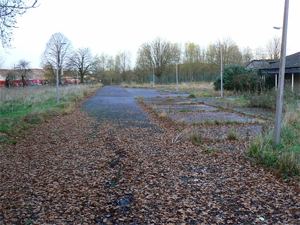

 The economic history can be traced back to the year 1086 when there are records of there being sufficient land for twelve plough teams although much of the land was used in common and remained so until the late 17th century. Compton Bassett Manor was bought by Sir John Weld in the mid 1600s and remained in his line until 1700. There then followed a turbulent time for the Manor, being bought and sold several times until 1758 when Compton Bassett house and park was sold to John Walker, the owner of Compton Cumberwell Manor. He was succeeded by his son John who took the additional surname Heneage. The Walker Heneage family remained in ownership until Godfrey Walker Heneage sold the estate, including land in neighbouring parishes, in 1918 to The Co-operative Wholesale Society. The Co-operative Society held the estate until 1927 when they sold it to Mr. E. G. Harding who split the estate into the seven smaller farms that we know today.
The economic history can be traced back to the year 1086 when there are records of there being sufficient land for twelve plough teams although much of the land was used in common and remained so until the late 17th century. Compton Bassett Manor was bought by Sir John Weld in the mid 1600s and remained in his line until 1700. There then followed a turbulent time for the Manor, being bought and sold several times until 1758 when Compton Bassett house and park was sold to John Walker, the owner of Compton Cumberwell Manor. He was succeeded by his son John who took the additional surname Heneage. The Walker Heneage family remained in ownership until Godfrey Walker Heneage sold the estate, including land in neighbouring parishes, in 1918 to The Co-operative Wholesale Society. The Co-operative Society held the estate until 1927 when they sold it to Mr. E. G. Harding who split the estate into the seven smaller farms that we know today.
In 1086 there is record of having been two mills in the area, one of which seems to have disappeared and no further documentary or physical evidence has been found. The second is believed to have stood on Abberd brook by what later became known as Mill Pound. Some physical archaeological evidence still exists to support the theory that this mill once stood there.
A quarry sited about half a mile east of the church produced a soft white chalk stone from which much of the village cottages were built until the mid 1800s. A second quarry, also east of the church, continued production until 1922.
A brickfield was recorded near the site of Freeth Farm in the early 1700s and a brick kiln was stood south-east of the farm until 1838.
RAF Compton Bassett was first opened as an air base in World War I and, like RAF Yatesbury, continued in the interwar years. It again took on a major role in World War II before closing in the 1960s. The housing around the airbase continued to be used after the main base had shut by RAF staff working at RAF Lyneham and other west country RAF bases. In the 1980s the housing was used for American service personnel stationed at US airbases such as RAF Fairford and RAF Greenham Common. The housing has now been sold to private buyers.
The site of RAF Compton Bassett is now known as Lower Compton, after the petitioning of the residents for a separate name, due to the fact it actually lies two miles from the village of Compton Bassett. Much of the old RAF base is now forming part of the gravel extraction and landfill operations of Hills and only a few of the camps original buildings survive.
In the late 1840s, William Blake ceased trading as Compton Bassetts major shopkeeper, baker and beer retailer. This gave his long time competitor, John Sexton, the opportunity to expand his own grocery business. John did so, and in 1850 established the White Horse in an early 18th century house where he also carried on his business as a shopkeeper. The inn was named after the hill figure that was cut out in 1870 at nearby Cherhill. By 1859 the White Horse Inn had passed into the ownership of George Bush, who opened a bakery on the premises in the early 1860s. This tripartite business (grocers shop, bakery and inn) was continued by William Bush and then, at the beginning of the 20th century, passed into the Blackman family. Shortly before the first world war, Frank Blackman dispensed with the provisions side and the bakery, concentrating exclusively on the White Horse Inn. Frank was succeeded by Louisa Blackman during the early 1920s, then Harold, who held the inn until 1935. Tom Goring took the White Horse into the war years and there has since been a succession of landlords with current incumbents being David Waine & Eva Novakova.
With a change in the way of business and working brought to us in modern times with the advent of the internet, together with many now able to work from home instead of commuting to the major commercial centers, the commercial heart of the village has changed considerably. Gone are the days when most of the village relied on the land for their living. In fact there are only a handful who do so these days. Amongst the farms of a bygone age we have classic car showrooms, engineering businesses and a plethora of IT businesses and design agencies.